In the world of dairy farming, optimizing the nutrition of dairy cows is a crucial aspect that directly influences their productivity and overall health. The lactation cycle is a fundamental factor significantly affecting a cow’s nutritional requirements. As dairy cows progress through various lactation stages, their nutritional needs evolve, demanding tailored diets to support their milk production, body condition, and reproductive performance.
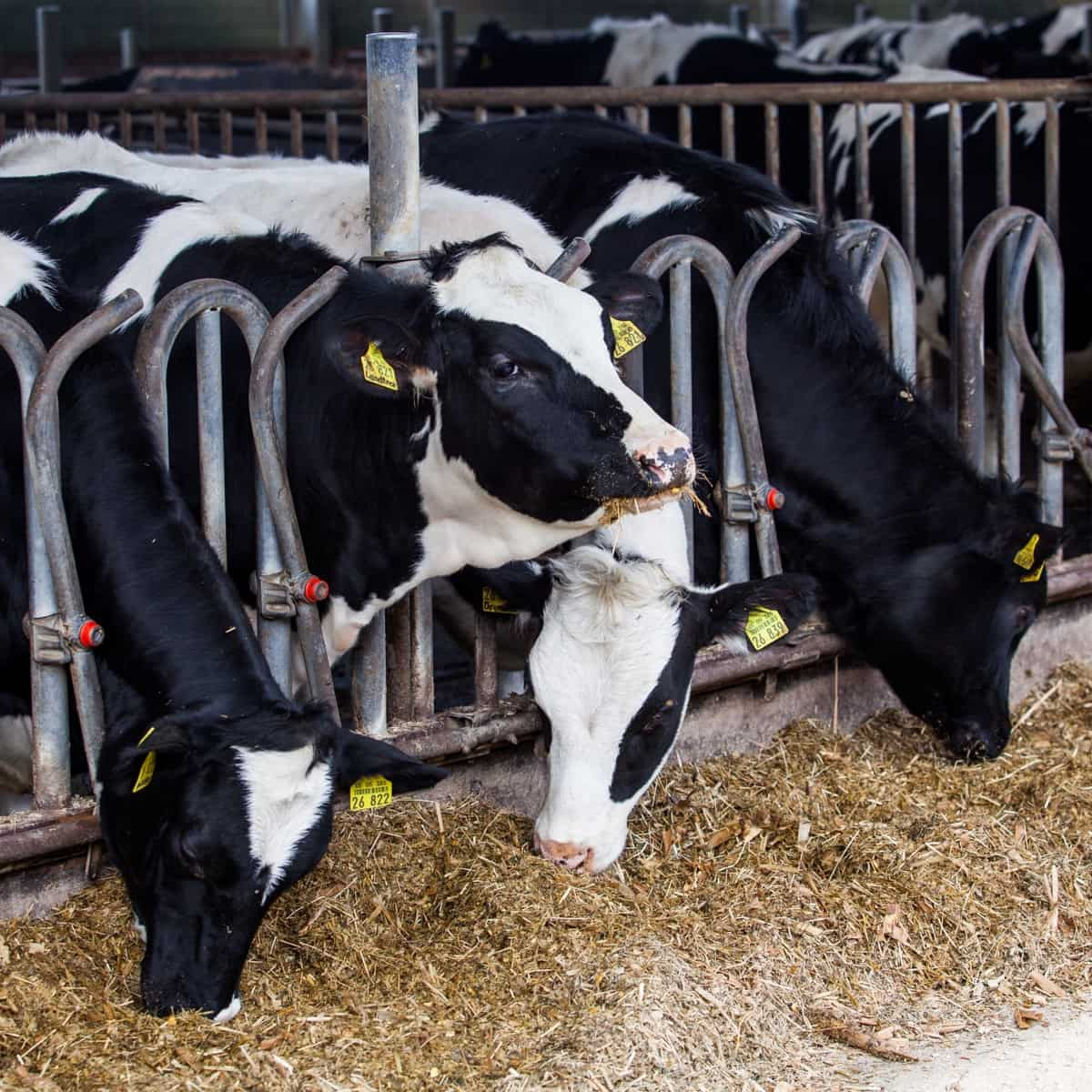
This blog post will explore the intricate relationship between lactation cycles and dairy cow nutrition. We will explore the unique nutritional demands of each lactation stage and discuss strategies for ensuring optimal nutrition, ultimately benefiting both the cows and the dairy farmers.
Feeding Phases for Optimum Production, Reproduction, and Health of Dairy Cows
- Early Lactation (0-70 days postpartum): This phase corresponds to peak milk production. High nutrient demands are needed to support milk production and cow recovery. Focus on providing energy-dense diets and optimizing dry matter intake.
- Peak Dry Matter Intake (70-140 days postpartum): While milk production declines, dry matter intake remains high. Maintaining optimal feed intake during this phase supports overall cow health and body condition.
- Mid- and Late Lactation (140-305 days postpartum): Milk production decreases, but nutrient requirements also decrease. Maintaining adequate protein and mineral intake while managing body condition is vital.
- Dry Period (60-14 days pre-calving): This phase serves as a resting period before the next lactation. Priorities include optimizing cow health, rebalancing nutrient stores, and preparing for calving. Nutrition focuses on maintaining body condition, preventing excessive weight gain, and supporting fetal development.
- Transition or Close-up Period (14 days pre-calving): This critical phase prepares cows for calving. Balanced nutrition is essential for increasing energy and mineral requirements, ensuring proper immune function, and minimizing the risk of metabolic disorders.
Dairy Cow Nutrition on Different Lactation Cycles Stages
Early lactation (0–70 days after calving): During this period, milk production increases rapidly, but feed intake may not meet the energy requirements for milk production. Adjusting the milking ratio is important, and gradually increasing grain intake can boost nutrient intake while avoiding off-feed problems. Protein is critical, and the ration should contain at least 19% crude protein to support milk production. Providing top-quality forage, adequate amounts of protein, and considering fat supplementation can enhance nutrient intake.
Peak DM intake (second 10 weeks after calving): Cows should be maintained at peak production and ensure proper feed intake. Limiting excessive grain intake and maintaining high-quality forage is crucial. Potential issues during this period include a rapid decline in milk production, low-fat tests, silent heat, and ketosis.
In case you missed it: Sustainable and Eco-friendly Strategies for Tick Control in Dairy Farming
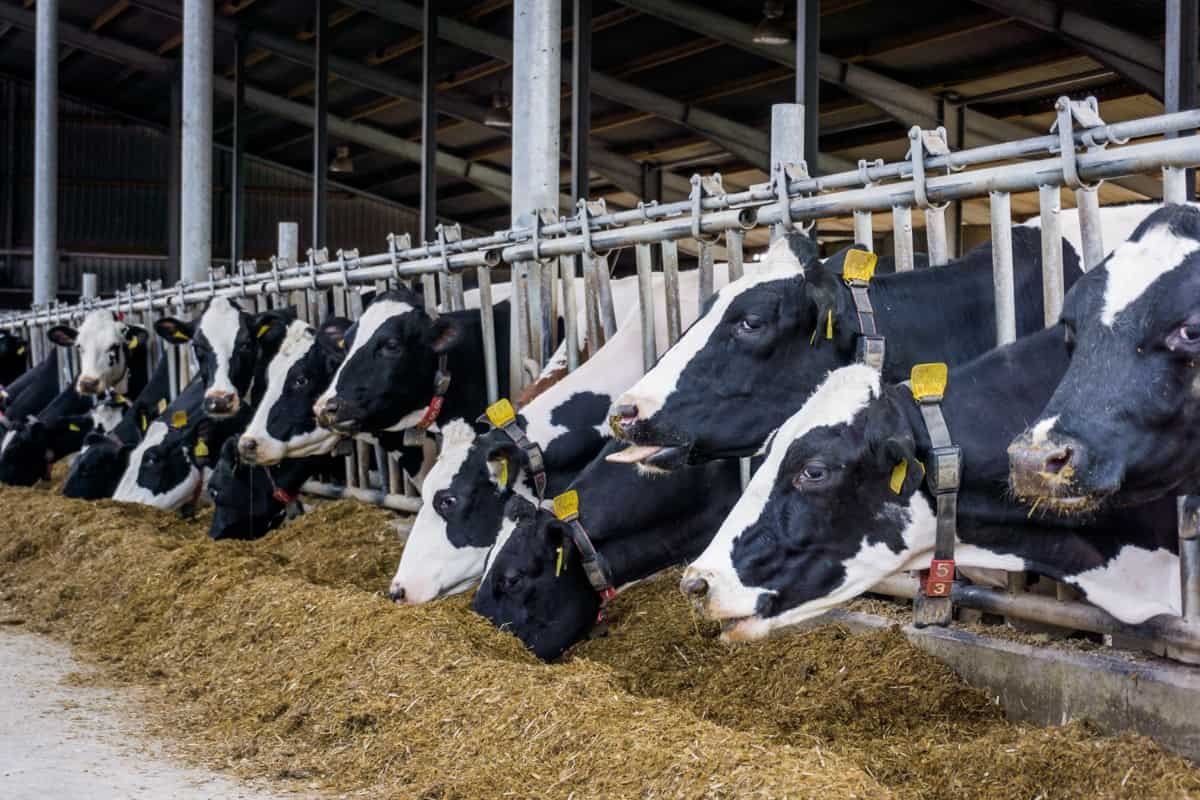
Mid- to late lactation (140 to 305 days after calving): This stage is easier to manage as milk production declines, and cows require less feed to replace body tissue. Grain feeding should meet milk production requirements and replace weight lost during early lactation. Young cows need additional nutrients for growth.
Dry period (60 to 14 days before calving): A well-managed dry cow program is essential to optimize milk yield and prevent metabolic issues. Dry cows’ diets should meet nutrient requirements, including body maintenance, fetal growth, and weight replacement. Adequate calcium, phosphorus, vitamins, and trace minerals should be provided.
Phase 5: Transition period (14 days before calving): The close-up dry cow feeding program is critical in transitioning dry cows to the lactation ration. Introducing grain helps shift the rumen bacteria population, and some ingredients from the lactation ration can ease the ration change stress. Proper management includes grain adaptation, increased protein, limited fat intake, and stimulation of rumination.
Dietary Requirements for High-Producing Dairy Cows in Early Lactation
Early lactation, which spans approximately the first three months after calving, is a critical stage for high milk production. However, cows in this phase often experience weight loss as the energy demand for milk production surpasses nutrient intake. During early lactation,
- Provide at least 40% forage in the diet to promote rumination.
- Avoid sudden changes in the ration and ensure any additions are introduced gradually.
- Achieve a balance between protein, energy density, fiber, and carbohydrates in the diet.
- Ensure ample availability of dry matter for consumption.
- Incorporate sufficient starch in the diet to enhance milk production.
Feeding Strategies to Enhance Milk Production in Mid-Lactation Dairy Cows
- Mid-lactation, occurring between days 130-230 after calving, is a stage where cows settle down after mating. To maintain and stimulate milk production during this period, it is essential to provide nutrient-dense food.
- Although peak production and dry matter intake have passed, maximizing intake remains crucial in mid-lactation. By prioritizing high-quality rations, dairy farmers can support increased milk solids production and prevent a decline in milk yield after peak production.
- In addition to quantity, the energy density of the feed plays a vital role. Like early lactation, incorporating starch-based feed rich in fermentable carbohydrates can enhance the metabolizable energy of the dry matter, thereby supporting milk production.
- As a rule of thumb, larger cow breeds producing 2kg of milk require approximately 1kg of dry matter intake to sustain their productivity.
In case you missed it: How to Start Dairy Farming in Odisha: Business Plan, Breeds, Setup Cost, Profit, and Requirements
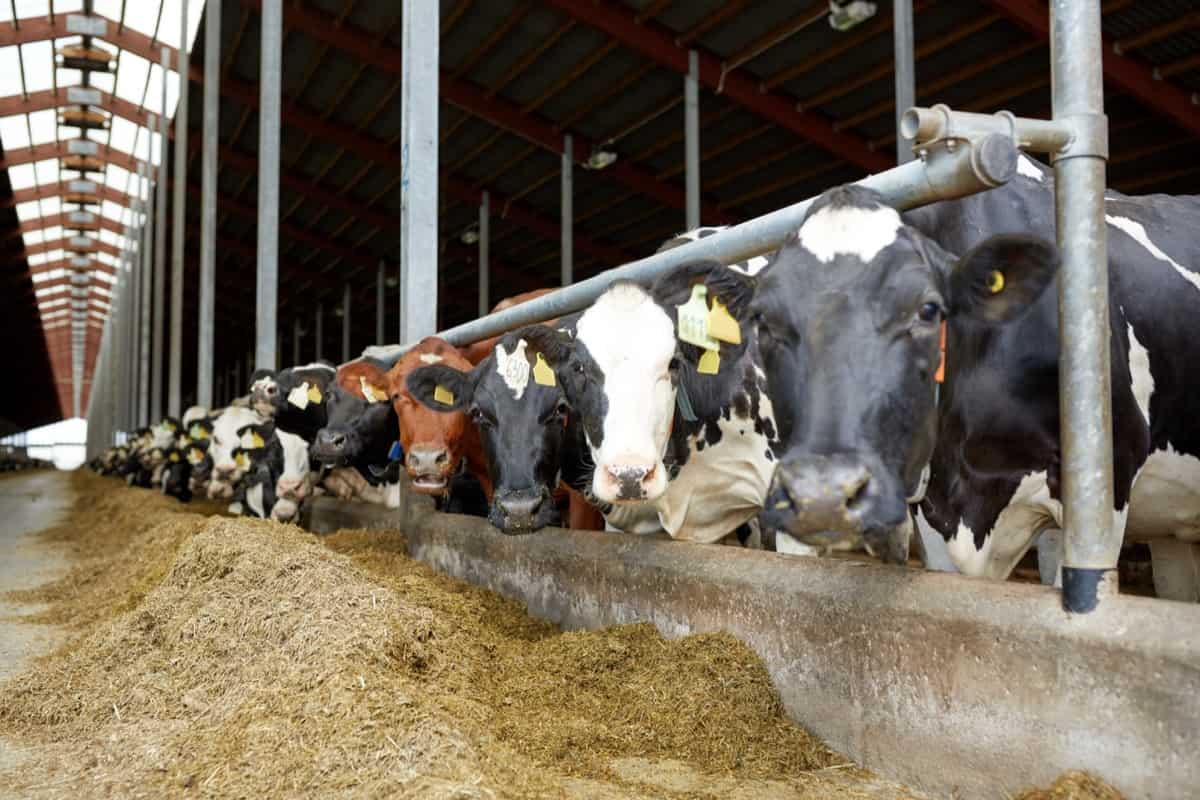
Nutritional Management for Optimal Milk Quality in Late-Lactation Dairy Cows
Late lactation represents the final stage of the cow milking cycle before they enter the dry period. During this phase, both milk production and feed intake gradually decline. As a result, rations with high protein and energy content become less critical compared to earlier stages.
In late lactation, the focus shifts towards supporting the cow’s weight gain as the fetus grows and replenishing the adipose tissue lost during early lactation. Although maintaining adequate nutrition is still important, the emphasis is not on maximizing milk production but on ensuring the cow’s overall health and preparing her for the upcoming dry period.
Balancing Energy and Protein Intake for Early Lactating Dairy Cows
Finding the right balance between energy and protein intake during early lactation is crucial to support milk production and cow health. Research suggests a higher energy density diet with adequate protein levels positively impacts milk yield and composition. A balanced diet ensures cows have enough energy for milk synthesis while providing essential amino acids for protein production.
Mineral Supplementation for Improved Reproductive Performance in Mid-Lactation Dairy Cows
In mid-lactation, mineral supplementation is crucial in enhancing dairy cows’ reproductive performance. Providing appropriate levels of minerals, such as calcium and phosphorus, in the grain mix (approximately 1%) supports optimal reproductive function. Additionally, maintaining salt intake at 0.5% of the ration’s dry matter or 1% of the grain mix is important. Adequate supplementation of minerals and a balanced diet can contribute to improved reproductive outcomes in mid-lactation dairy cows.
Feeding Strategies to Prevent Metabolic Disorders in Late-Lactation Dairy Cows
To prevent metabolic disorders in late lactation, providing a balanced diet with appropriate energy and nutrient levels is important. Avoid over-conditioning cows and manage body weight. Monitor calcium and phosphorus intake to prevent milk fever. Control energy intake to prevent fatty liver syndrome. Implement proper feeding practices and ensure adequate access to feed and water to support cow health and prevent metabolic issues.
Effects of Dietary Fiber on Rumen Fermentation and Milk Production in Early Lactating Cows
Dietary fiber is crucial in early lactating cows’ rumen fermentation and milk production. Adequate fiber in the diet promotes rumen health and maintains a stable rumen environment. It stimulates the growth of beneficial rumen bacteria, leading to efficient fiber digestion and volatile fatty acid production. Fiber fermentation also helps maintain a proper rumen pH, preventing acidosis. Additionally, dietary fiber positively influences dry matter intake, nutrient utilization, and milk production in early lactating cows, contributing to overall productivity and performance.
Optimizing Amino Acid Balance for Mid-Lactation Dairy Cows
Achieving an optimal amino acid balance is crucial for mid-lactation dairy cows. Research indicates that a balanced amino acid profile in the diet positively affects milk production and composition. Providing the right combination and proportion of essential amino acids ensures efficient protein synthesis and utilization, improving milk yield and quality. Formulating rations with adequate lysine, methionine, and other essential amino acids can enhance milk protein synthesis and overall cow performance.
In case you missed it: Dairy Entrepreneurship Development Scheme in India: DEDS Benefits, Eligibility, and How to Apply
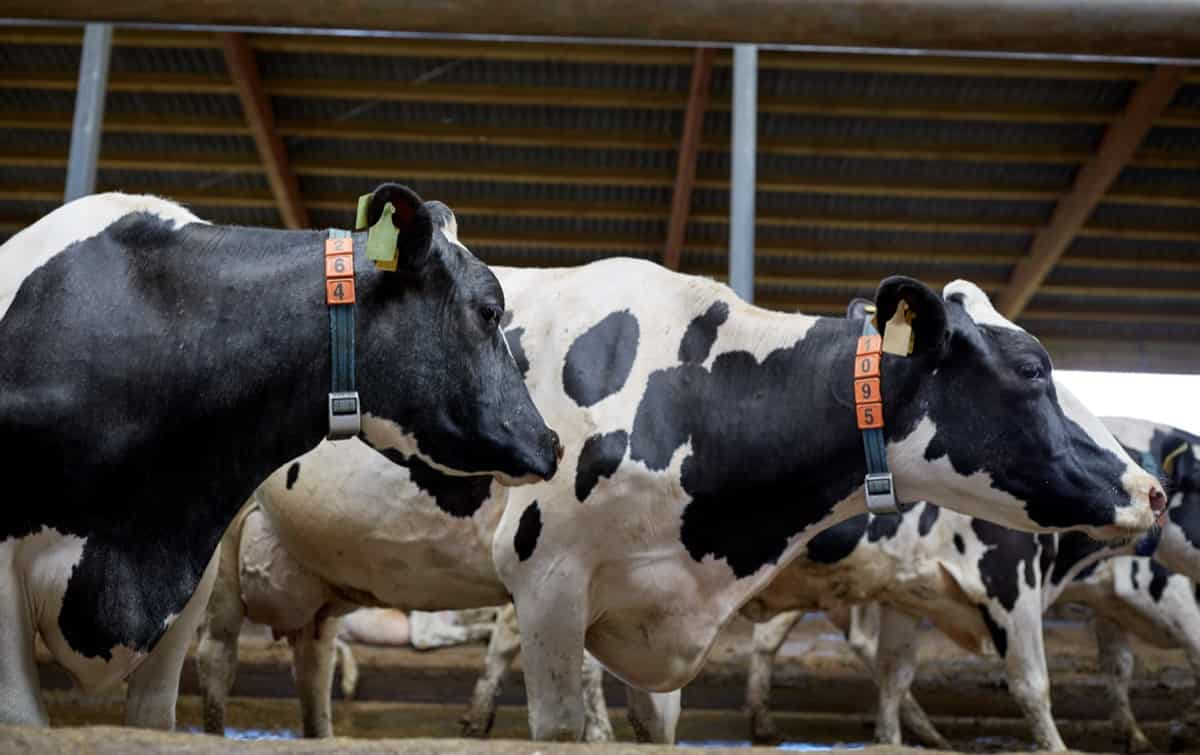
Managing Transition Diets for Smooth Lactation Cycle Transitions in Dairy Cows
The transition or close-up dry cow feeding program is vital in preparing dry cows and springing heifers for the lactation ration while preventing metabolic issues. Introducing grain two weeks before calving is crucial to shift the rumen bacteria population from forage digestion to a mix of forage and grain digestion. Adding some ingredients from the lactation ration during this period eases the ration change stress post-calving.
- Providing 2.5 to 4.35 kg of grain to adapt rumen microbes to fermentable carbohydrates and stimulate rumen papilla formation.
- Increasing protein in the ration to 14-15% of the ration DM, with some undegradable protein to supply amino acids for fetal growth.
- Limiting fat intake to 100 grams to avoid depressing dry matter intake.
- Maintaining 2.7 to 4.5 kg of long hay to stimulate rumination.
- Limiting maize silage or lactation TMR intake to 1% of body weight for proper digestion.
Role of Vitamins in Immune Function and Milk Production in Late-Lactation Dairy Cows
Vitamins support immune function and milk production in late-lactation dairy cows. Adequate vitamin levels are essential for a robust immune system, helping cows resist diseases and infections. Vitamin supplementation promotes optimal milk production, ensuring cows meet their nutrient requirements for continued lactation.
Vitamins A, D, and E are important as they contribute to immune function, bone health, and antioxidant protection. Proper vitamin supplementation in late-lactation cows helps maintain their overall health and productivity, contributing to the sustainability of dairy operations.
Influence of Dietary Fat Sources on Milk Composition and Yield in Early Lactating Cows
During early lactation, milk production increases rapidly, but feed intake often falls short of meeting the energy needs for milk production. This leads to the mobilization of body tissue to meet energy demands. Managing the cow’s transition to the milking ratio is crucial during this phase. Gradually increasing grain intake by about ½ kg daily after calving can boost nutrient intake while minimizing off-feed issues and acidosis.
It’s important to avoid excessive grain levels (over 60% of the total dry matter) to prevent acidosis and maintain a healthy milk fat percentage. The total ration should contain a minimum of 18% acid detergent fiber (ADF) and 28% neutral detergent fiber (NDF). Forages should provide at least 75% of the total NDF in the ration, equivalent to around 21 percentage units of NDF.
Feeding Strategies to Enhance Nutrient Utilization in Mid-Lactation Dairy Cows
Mid-lactation is when milk production declines and cows enter the pregnancy phase. Nutrient intake during this period typically meets or exceeds requirements, making it easy to manage. To optimize nutrient utilization, adjust grain feeding to meet milk production requirements and replenish lost body weight.
Consider additional nutrient supplementation for young cows, such as NPN (Non-Protein Nitrogen), ensuring proper salt intake, providing calcium-phosphorus mineral supplementation, limiting urea intake to 200 grams per day or 1% of the grain mix, and supplementing vitamins A, D, and E in rations. Pay attention to ration form, avoiding excessive chopping or grinding of forages and grains.
In case you missed it: How to Make Corn Silage: Production and Management Steps for Goats, Sheep, Cows, Pigs, and Cattle
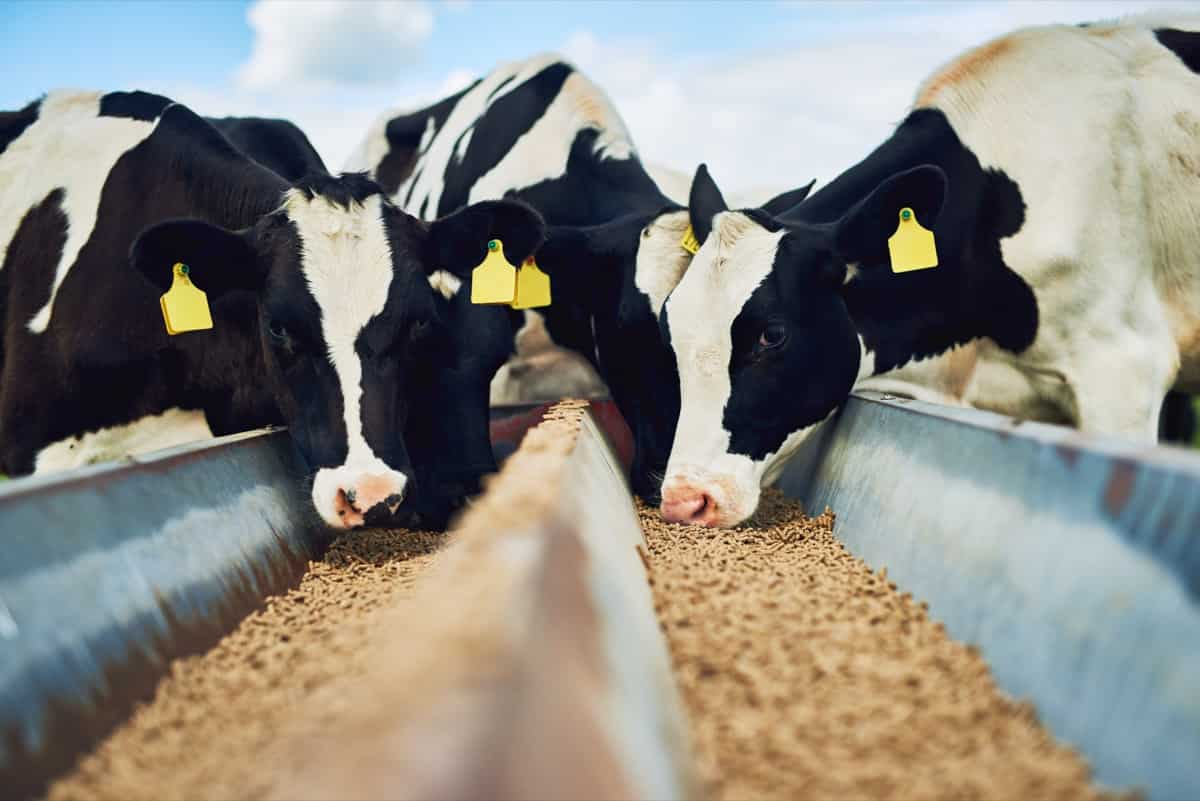
Impact of Rumen-Protected Nutrients on Milk Production and Reproductive Performance in Late-Lactation Dairy Cows
Rumen-protected nutrients, such as fats and proteins, can significantly benefit late-lactation dairy cows’ milk production and reproductive performance. These nutrients enhance nutrient utilization and improve cow health during this critical phase. Rumen-protected fats increase energy density, allowing cows to meet high energy demands without excessive weight loss, sustaining milk production, and preventing declines. Additionally, rumen-protected proteins ensure essential amino acids are available for protein synthesis, supporting milk quality and yield.
Nutrient Requirements and Feeding Strategies for Heat-Stressed Early Lactating Cows
- Increased Water Intake: Heat-stressed cows need additional water to maintain hydration. Providing clean and cool water sources is crucial for preventing dehydration.
- Energy Requirements: Heat stress increases energy expenditure, necessitating higher energy intake. Formulating diets with increased energy density can help meet cows’ elevated energy needs.
- Electrolyte Supplementation: Electrolytes such as sodium, potassium, and chloride become crucial during heat stress. Supplementation helps maintain electrolyte balance and supports proper bodily functions.
- Fiber Levels: Including high-quality fiber sources in the diet aids in maintaining rumen function and promoting efficient digestion.
- Antioxidant Supplementation: Heat stress can induce oxidative stress in cows. Supplementing diets with antioxidants, such as vitamin E and selenium, can mitigate the negative effects.
- Heat Abatement Strategies: Cooling methods like shade, fans, and misters can reduce heat stress and improve cow comfort.
- Feeding Schedule: Adjusting feeding times to cooler periods of the day helps mitigate heat stress and encourages feed intake.
Optimizing Feed Efficiency Through Precision Feeding Techniques Across Lactation Cycles
- Immediate Post-Calving Optimization: Provide 45-70 liters of warm water, maintain clean feeding troughs, and allow ample access to grass. Supplement with energy-dense rations to meet high energy demands.
- Enhance Comfort Levels: Minimize stress by avoiding overcrowding and keeping post-calving cows with fresh cows for 2-3 weeks. Maintain paddock capacity below 85% and prevent separation from the usual herd members.
- Prepare During the Dry Period: Ensure adequate nutrition and maintain optimal body condition score during the dry period to support future milk production.
- Support Rumen Health: Provide digestible fiber and avoid slug feeding to reduce the risk of rumen acidosis. Longer forage pellets can be beneficial.
- Supplement with Feed Additives: Utilize additives like amino acids, yeast cultures, and ionophores to meet protein requirements, enhance rumen fermentation, and increase glucose availability.
- Avoid Anti-Nutritional Factors: Prevent mold growth and unintended fermentation by replacing food supplementation daily and storing it correctly. High mold colonies can decrease feed intake and digestibility, impacting milk production in the later lactation stages.
- Include Starch-Based Feed: Incorporate starch grains in the early and mid-lactation cycles to increase fermentable carbohydrates in the diet. This elevates glucose and blood insulin levels, leading to higher lactose production in milk.
In case you missed it: Dairy Disease Symptoms and Treatment for Cows, Cattle, Goats, and Sheep
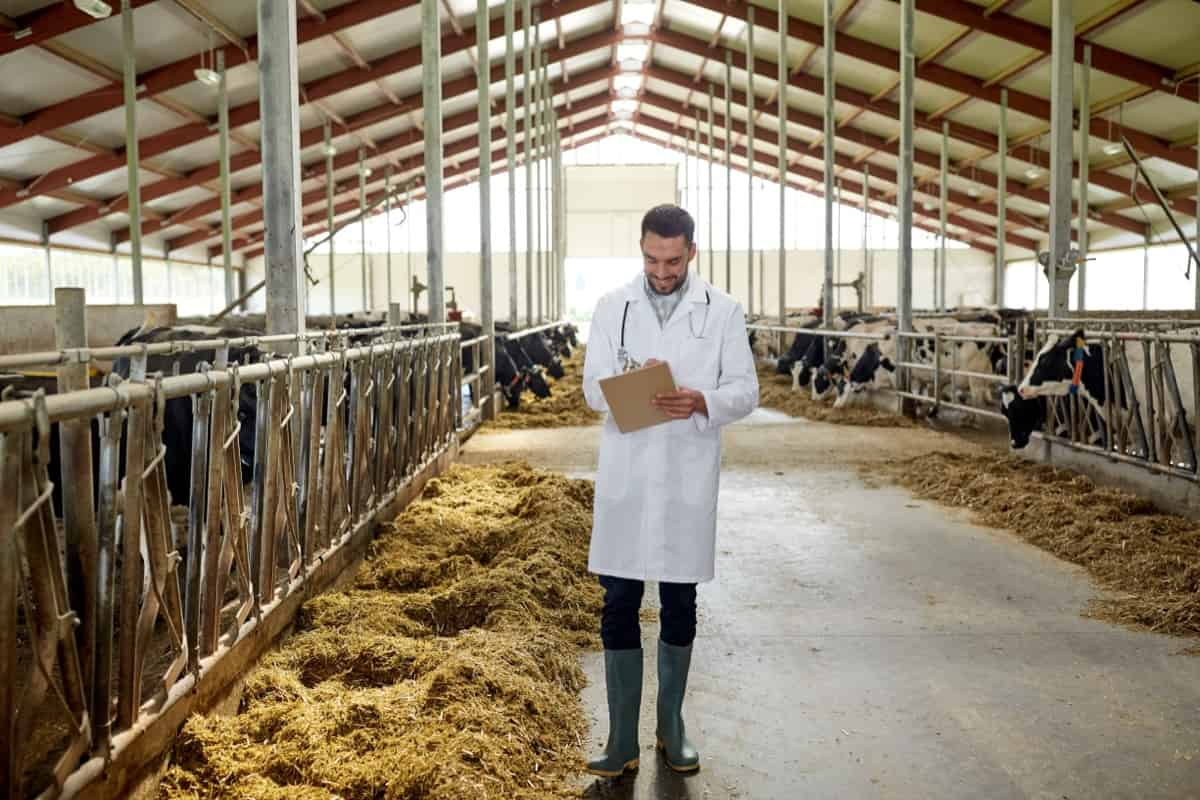
Conclusion
Proper nutrition plays a crucial role in the success of dairy cow management throughout different lactation cycles. Farmers can optimize milk production, cow health, and reproductive performance by understanding and meeting the specific nutritional requirements at each stage.
- Types of Pesticides Used in Agriculture: A Beginner’s Guide
- Economical Aquaculture: A Guide to Low-Budget Fish Farming
- 15 Common Planting Errors That Can Doom Your Fruit Trees
- How to Make Houseplants Bushy: Effective Tips and Ideas
- Innovative Strategies for Boosting Coconut Pollination and Yield
- Pollination Strategies for Maximum Pumpkin Yield
- The Complete Guide to Chicken Fattening: Strategies for Maximum Growth
- Natural Solutions for Tulip Problems: 100% Effective Remedies for Leaf and Bulb-Related Issues
- Revolutionizing Citrus Preservation: Towards a Healthier, Greener Future
- Natural Solutions for Peony Leaf and Flower Problems: 100% Effective Remedies
- Maximizing Profits with Avocado Contract Farming in India: A Comprehensive Guide
- Natural Solutions for Hydrangea Problems: 100% Effective Remedies for Leaf and Flowers
- The Ultimate Guide to Choosing the Perfect Foliage Friend: Bringing Life Indoors
- From Sunlight to Sustainability: 15 Ways to Use Solar Technology in Agriculture
- The Ultimate Guide to Dong Tao Chicken: Exploring from History to Raising
- The Eco-Friendly Makeover: How to Convert Your Unused Swimming Pool into a Fish Pond
- Mastering the Art of Delaware Chicken Farming: Essentials for Healthy Backyard Flocks
- 20 Best Homemade Fertilizers for Money Plant: DIY Recipes and Application Methods
- How to Craft a Comprehensive Free-Range Chicken Farming Business Plan
- Brighten Your Flock: Raising Easter Egger Chickens for Beauty and Bounty
- How to Optimize Your Poultry Egg Farm Business Plan with These Strategies
- Subsidy for Spirulina Cultivation: How Indian Government Schemes Encouraging Spirulina Farmers
- Ultimate Guide to Raising Dominique Chickens: Breeding, Feeding, Egg-Production, and Care
- Mastering the Art of Raising Jersey Giant Chickens: Care, Feeding, and More
- Ultimate Guide to Raising Legbar Chickens: Breeding, Farming Practices, Diet, Egg-Production
- How to Raise Welsummer Chickens: A Comprehensive Guide for Beginners
- How to Protect Indoor Plants in Winter: A Comprehensive Guide
- Ultimate Guide to Grow Bag Gardening: Tips, Tricks, and Planting Ideas for Urban Gardeners
- Guide to Lotus Cultivation: How to Propagate, Plant, Grow, Care, Cost, and Profit
- Agriculture Drone Subsidy Scheme: Government Kisan Subsidy, License, and How to Apply Online
- Ultimate Guide to Raising Araucana Chickens: Breed Profile, Farming Economics, Diet, and Care
- Bringing Hydroponics to Classroom: Importance, Benefits of Learning for School Students
- Ultimate Guide to Raising Polish Chickens: Breed Profile, Farming Economics, Diet, and Care
- Ultimate Guide to Raising Australorp Chickens: Profile, Farming Economics, Egg Production, Diet, and Care
- Silkie Chicken Farming: Raising Practices, Varieties, Egg Production, Diet, and Care
- Sussex Chicken Farming: Raising Practices, Varieties, Egg Production, Diet and Care